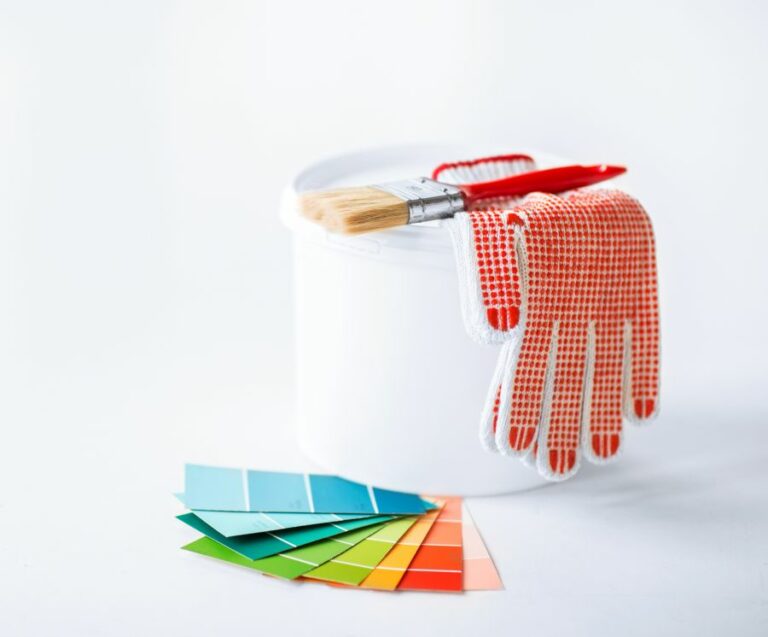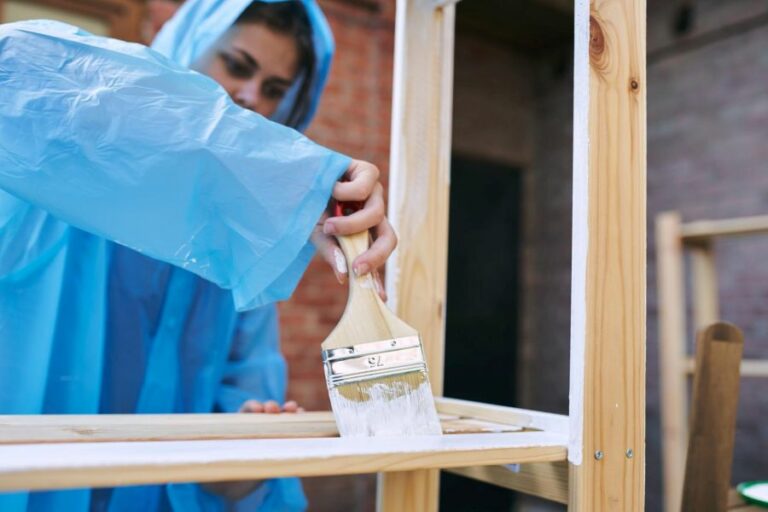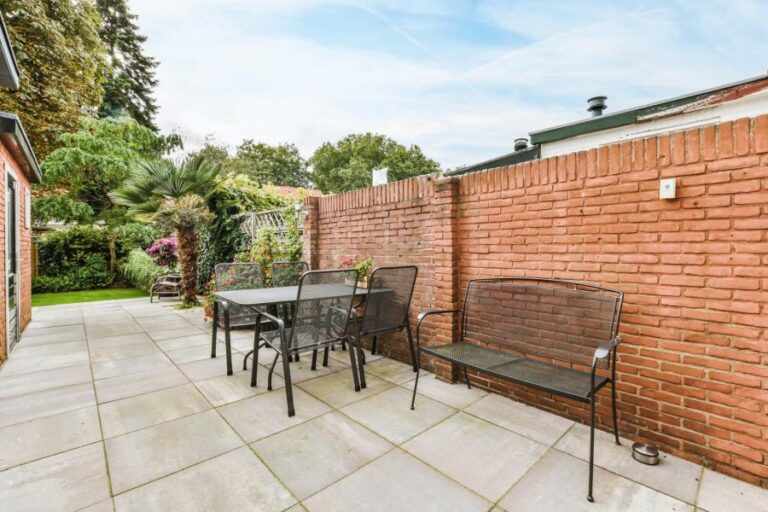Outdoor Sealant Paint, 25 Things You Should Know
Discover the wonders of outdoor sealant paint in our latest blog post, where we unravel the secrets to maintaining pristine exteriors and durable surfaces. Outdoor sealant paint is no ordinary paint; it protects against weathering, fading, and even mold growth, ensuring the longevity of wooden, concrete, and masonry surfaces.
Outdoor sealant paint:
Outdoor sealant paint, known as weatherproof paint, protects exterior surfaces from moisture, sunlight, and temperature changes. When choosing outdoor sealant paint, essential factors include surface type, functionality (water, UV, thermal, abrasion, and stain resistance), durability, color, and finish. Thorough surface preparation, proper application techniques, and optimal weather conditions are crucial for successful application. Recommended brands for outdoor sealant paint are Valspar, PPG Paints, Sherwin-Williams, and BEHR.

Discover countless benefits of outdoor sealant paint for your home, vehicle, and more. Unveil expert tips and tricks for application, enhancing protection, prolonging durability, and preserving your property’s visual appeal.
Venture into a world of endless possibilities for convenient, efficient, and sustainable maintenance.
Contents
- 1 Exterior Sealant Coating for Paint Protection
- 2 What is the Most Effective Paint Sealant for Outdoor Applications?
- 3 Understanding Exterior Paint Sealer: What is it?
- 4 What Are the Applications and Uses of Sealant Paint?
- 5 Is it Possible to Apply Paint Over an Exterior Sealer?
Exterior Sealant Coating for Paint Protection
• What is Outdoor Sealant Paint?
Outdoor sealant paint, also known as exterior sealant paint or weatherproof paint, is a type of paint designed for use on outdoor surfaces to protect them from the elements, such as moisture, sunlight, and temperature changes.
These paints are specifically formulated to withstand the rigors of outdoor conditions and provide an extra layer of protection to the surface, preventing damage caused by water penetration, mold, mildew, and weathering.
Outdoor sealant paints are often composed of a mix of acrylic, latex, or oil-based resins that create a durable and flexible coating.
This type of paint is commonly used on a variety of exterior surfaces, such as wood, concrete, stucco, brick, and metal, to provide long-lasting protection and maintain the integrity of the surface.
• Factors to Consider When Choosing Outdoor Sealant Paint
– Surface Type
The first important factor to consider when selecting an outdoor sealant paint is the type of surface where the paint will be applied. Different materials require different types of sealant paint formulations to ensure optimum protection and adhesion.
For instance, wood surfaces usually require flexible and water-resistant paint to prevent moisture from seeping in while allowing the wood to breathe. Concrete, on the other hand, requires breathable paint that can also resist the penetration of salts and other chemicals.
– Functionality
Outdoor sealant paints can provide various functional properties, depending on the specific requirements of the surface. Some common functionalities to consider when selecting an outdoor paint include:
- Water resistance: To protect the surface from moisture damage and prevent the growth of mold and mildew
- UV resistance: To prevent fading and degradation from exposure to sunlight
- Thermal resistance: To mitigate the harmful effects of extreme temperature fluctuations
- Abrasion resistance: To protect the surface from wear and tear caused by foot traffic, vehicular movement, or harsh weather conditions
- Stain resistance: To prevent dirt and stains from penetrating the surface, making it easy to clean and maintain
– Durability
When considering various outdoor sealant paint options, it is crucial to select a product with a proven track record of durability, as outdoor surfaces often endure harsh environmental conditions. Make sure to check the warranty or guarantee offered by the paint manufacturer, as this can be an indicator of the product’s quality and expected lifespan.
– Color and Finish
Outdoor sealant paints are available in a wide range of colors and finishes, allowing homeowners to choose the perfect shade and style for their exterior surfaces.
When selecting a color, consider the surrounding environment and any relevant design factors, such as the color of adjacent buildings, landscape features, or other exterior elements. The paint’s finish will also impact the final appearance, with options ranging from flat or matte to satin, semi-gloss, or gloss.
• Tips for Applying Outdoor Sealant Paint
– Proper Surface Preparation
Thorough surface preparation is essential when applying outdoor sealant paint. This process typically includes cleaning the surface to remove dirt, mildew, and loose paint, followed by repairing defects such as cracks or gaps.
Depending on the surface, it may also be necessary to apply a primer before using the sealant paint.
– Optimal Weather Conditions
When applying outdoor sealant paint, it is crucial to choose the right weather conditions. Temperature, humidity, and wind levels can significantly impact the paint’s adhesion, viscosity, and drying time, potentially causing problems during the application or reducing the paint’s effectiveness over time.
Ideally, select a day with mild temperatures, low humidity, and minimal wind to ensure optimal paint performance.
– Proper Application Techniques
Consistency is key when applying outdoor sealant paint. Use high-quality brushes, rollers, or spray equipment, and apply an even coat to the entire surface, taking care not to over or under-apply the paint.
Following the manufacturer’s instructions for spreading rate, drying time, and recoating recommendations will help ensure a successful application and a durable, protective finish.
• Recommended Outdoor Sealant Paint Brands
There are many outdoor sealant paint brands available in the market, but some have proven themselves to stand out in terms of their quality, durability, and performance. Based on my personal experience, some of the top brands I recommend include:
- Valspar
- PPG Paints
- Sherwin-Williams
- BEHR
In conclusion, outdoor sealant paint is an essential investment in protecting exterior surfaces from the elements and potential damage. By considering factors such as surface type, functionality, durability, color, and finish, you can select the perfect outdoor sealant paint for your specific needs.
Proper surface preparation, application techniques, and favorable weather conditions will ensure a successful application and a long-lasting, protective finish to enhance and preserve your home’s exterior for years to come.
What is the Most Effective Paint Sealant for Outdoor Applications?
A fresh coat of paint can give your outdoor space a new lease on life. However, selecting the right paint sealant ensures that your paint job will withstand the test of time and harsh weather conditions.
• Understanding Paint Sealants and Their Benefits
Paint sealants provide a protective layer to your outdoor paint job, shielding it from various environmental factors such as rain, sunlight, and pollution.
They can also prevent paint from fading, peeling, or chipping, ensuring that your space remains vibrant and visually appealing for longer periods. In addition, high-quality paint sealants can thwart the growth of mold, mildew, and algae.
• Acrylic Sealants: A Popular Choice for Outdoor Projects
Acrylic sealants are water-based and offer several advantages for outdoor use:
- Easy Application: Acrylic sealants are user-friendly and can be applied with a brush, roller, or sprayer.
- Fast Drying Time: They usually dry within a few hours, allowing you to finish your project quickly.
- Eco-Friendly: Acrylic sealants emit less odor and have a lower volatile organic compound (VOC) content, making them an environmentally-friendly choice.
- Versatility: They are suitable for a range of surfaces, including wood, concrete, and masonry.
Based on these advantages, I recommend several acrylic paint sealants for outdoor use.
– Recommended Acrylic Sealants
- Rust-Oleum Painter’s Touch Clear Gloss: This water-based acrylic paint sealant provides a glossy finish to your outdoor project while offering long-lasting protection. It is suitable for wood, metal, concrete, and more.
- KILZ General Purpose Exterior Latex Primer/Sealer: This product is known for its excellent adhesion and durability. It offers a mildew-resistant coating, making it an ideal option for humid environments or areas prone to mold growth.
- Rainguard Water Sealers Premium Wood Sealer: This eco-friendly sealer protects wood surfaces from water, sun, and mildew damage without altering the wood’s natural appearance.
• Choosing the Right Sealant for Your Outdoor Project
To select the best paint sealant for your outdoor project, consider the following factors:
- Surface Material: Make sure to choose a compatible sealant for the surface you will be painting, such as wood or concrete.
- Weather Conditions: Consider the typical climate in your area. If you live in a particularly rainy or humid environment, opt for a sealant designed to resist water and prevent mold growth.
- Finish: Determine whether you prefer a glossy or matte finish, as this will impact the final appearance of your project.
- Drying Time: If you need to complete your project quickly, choose a sealant with a fast drying time.
• Proper Application of Paint Sealant for Optimal Results
To ensure your paint sealant provides maximum protection and longevity, follow these application tips:
- Surface Preparation: Thoroughly clean and dry the surface before applying the sealant. Remove any dirt, debris, or loose paint, and repair any cracks or holes.
- Priming: Apply a primer if necessary, particularly if you are working with porous surfaces.
- Application: Apply the paint sealant using a brush, roller, or sprayer, following the manufacturer’s instructions for coverage and drying time.
- Curing Time: Allow the sealant to cure for the recommended time before exposing the surface to rain, sunlight, or other environmental factors.
- Maintenance: Regularly check the condition of your paint job and reapply the sealant as needed to maintain its protective qualities.
• In Conclusion
Finding the best paint sealant for your outdoor project is crucial to ensure the longevity and visual appeal of your space.
Acrylic sealants, such as Rust-Oleum Painter’s Touch Clear Gloss, KILZ General Purpose Exterior Latex Primer/Sealer, and Rainguard Water Sealers Premium Wood Sealer, are excellent options due to their ease of application, ecological benefits, and versatility.
By selecting the appropriate sealant for your project and applying it correctly, you can enjoy a vibrant and well-protected outdoor space for years to come.
Rank | Product | Brand | Key Features |
|---|---|---|---|
1 | Polyurethane Exterior Sealant | Minwax | Water-resistant, UV protection, durable |
2 | Acrylic Urethane Sealant | Rust-Oleum | Waterproof, UV protection, easy to apply |
3 | Silicone Sealant | GE Sealants & Adhesives | Flexible, water-resistant, long-lasting |
4 | All-Purpose Exterior Sealant | Gorilla Glue | Weather-resistant, paintable, easy to apply |
5 | Clear Wood Sealer | Thompson’s WaterSeal | Waterproof, UV protection, compatible with various surfaces |
Understanding Exterior Paint Sealer: What is it?
Exterior paint sealer plays a crucial role in protecting homes and buildings from the harsh elements. It is designed to seal the surface, repelling water, resisting UV rays, and shielding against dirt and grime.
• Key Benefits of Using Exterior Paint Sealer
– Enhanced Durability
Applying a high-quality exterior paint sealer extends the life of paint, making it more durable and less prone to fading, cracking, or peeling. This additional layer of protection saves money and effort in the long run, as re-painting is not required as often.
– Improved Moisture Resistance
One of the main functions of an exterior paint sealer is to repel moisture, preventing it from penetrating the substrate. This is especially important in areas with heavy rainfall or high humidity, as excess moisture can lead to mold, mildew, and wood rot.
– Protection from Harmful UV Rays
Prolonged exposure to the sun’s ultraviolet rays can cause paint to fade and degrade over time. Exterior paint sealers provide a layer of UV protection, ensuring the vibrancy and longevity of the paint.
– Dirt and Stain Resistance
A sealed exterior surface resists dirt, stains, and grime, making it easier to clean and maintain. This is particularly beneficial for lighter-colored paints, which tend to show dirt more readily.
• Types of Exterior Paint Sealers
There are various types of exterior paint sealers available in the market, each with its own set of advantages and disadvantages. Some of the most popular types include:
– Acrylic Sealers
Acrylic sealers are water-based and provide an excellent balance of performance and ease of use. They dry quickly, have a low odor, and can be applied using a brush, roller, or spray equipment.
They are also resistant to UV rays, yellowing, and mildew and can be applied to a variety of exterior surfaces, such as wood, masonry, and stucco.
– Silicone Sealers
Silicone sealers offer superior water repellency and long-lasting protection against moisture damage. They form a flexible and breathable barrier, ensuring that water cannot penetrate the surface while allowing trapped moisture to escape.
This makes silicone sealers ideal for use in areas with high humidity or frequent rainfall.
– Epoxy Sealers
Epoxy sealers are known for their exceptional strength and durability, making them the preferred choice for heavy-duty applications or high-traffic areas. They provide excellent chemical and abrasion resistance and can withstand extreme weather conditions.
However, epoxy sealers may require more preparation and longer drying times compared to other types of sealers.
– Penetrating Sealers
Penetrating sealers, as the name implies, penetrate deep into the substrate to provide long-lasting protection. These sealers bond with the surface rather than forming a film and are often used on porous materials such as concrete, brick, or natural stone.
Penetrating sealers typically have low gloss and do not significantly alter the appearance of the surface.
• How to Apply Exterior Paint Sealer
To ensure the best results, follow these steps when applying exterior paint sealer:
– Step 1: Surface Preparation
Proper surface preparation is key to the success of any painting or sealing project. Begin by cleaning the surface, removing any dirt, dust, mold, or mildew. Repair any cracks or damage, and sand off any loose or peeling paint. Allow the surface to dry thoroughly before proceeding.
– Step 2: Choose the Right Sealer
Select an exterior paint sealer that is appropriate for the surface and weather conditions. Consult the manufacturer’s guidelines to determine compatibility, coverage rate, and drying time.
– Step 3: Application
Always follow the manufacturer’s instructions when applying the sealer. Typically, exterior paint sealers can be applied using a brush, roller, or spray equipment. For best results, apply the sealer in thin and even coats, allowing it to dry completely between coats.
– Step 4: Maintenance
Once the sealer has fully cured, periodic maintenance is essential to keep the surface looking its best. Clean the surface regularly, and reapply the sealer as needed, depending on the level of exposure to the elements and the type of sealer used.
• Final Thoughts
Investing in a high-quality exterior paint sealer is crucial for protecting your home or commercial property against the elements.
By choosing the right type of sealer and following proper application techniques, you can extend the life of your paint, enhance the appearance of your property, and save time and money in the long run.
What Are the Applications and Uses of Sealant Paint?
• Introduction to Sealant Paint
Sealant paint also referred to as sealing or waterproofing paint, is a protective coating applied on surfaces to prevent water penetration, mold, mildew growth, and damage caused by moisture.
This type of paint is predominantly used in both residential and commercial settings to protect walls, roofs, and other surfaces from the effects of moisture and weathering.
In this comprehensive guide, we will discuss the various applications of sealant paint and its benefits.
• Types of Sealant Paint
There are several types of sealant paint, each with specific applications and benefits. The most common types include:
– Acrylic Sealant Paint
Acrylic sealant paint is a water-based solution that provides a durable and flexible finish when dry. It is often used for interior and exterior surfaces, including walls, ceilings, and roofs. This type of sealant paint is resistant to UV radiation and can be painted over with most other types of paint.
– Silicone Sealant Paint
Silicone sealant paint is an elastomeric coating that forms a flexible, rubber-like barrier to protect surfaces from water, UV rays, and weathering. It is commonly used on exterior surfaces and can be applied to a variety of materials, including masonry, concrete, and brick.
Silicone sealant paint is resistant to extreme temperatures and is highly durable.
– Elastomeric Sealant Paint
Elastomeric sealant paint is a rubberized, waterproof coating that is highly flexible and can expand and contract with the surface it is applied. It is often used for roofs, walls, and other exterior surfaces exposed to harsh weather conditions.
Elastomeric sealant paint can bridge small gaps, cracks, and seams, providing a durable and long-lasting seal against water penetration.
– Bituminous Sealant Paint
Bituminous sealant paint, also known as asphalt or tar-based paint, is a thick, sticky coating that provides a waterproof barrier on a variety of surfaces, including masonry, concrete, and metal.
It is often used for foundations, basements, and underground structures that require a durable, long-lasting seal against moisture intrusion.
• Applications of Sealant Paint
Here are some of the typical applications and uses of sealant paint:
– Exterior Walls and Foundations
Sealant paint can be applied to exterior walls and foundations to prevent water penetration and damage caused by moisture. This can help improve the durability and longevity of the structure, prevent mold and mildew growth, and improve overall energy efficiency.
– Roof Surfaces
Roof surfaces, especially those flat or with a low slope, can develop cracks and leaks due to exposure to harsh weather conditions. Using sealant paint on roof surfaces can help waterproof the surface, prevent leaks, and extend the roof’s life.
– Bathrooms and Kitchens
Bathrooms and kitchens are prone to excess moisture due to the activities conducted in these spaces, such as bathing and cooking. Applying sealant paint on walls, ceilings, and other surfaces in these rooms can help to prevent moisture damage, mold, mildew growth, and other issues caused by dampness.
– Basements
Basements are vulnerable to moisture intrusion and flooding. Sealant paint can be used on basement walls and floors to create a waterproof barrier that can help prevent water infiltration and dampness.
– Decks and Patios
Sealant paint can be applied on decks, patios, and other outdoor surfaces to prevent moisture damage, rotting, and weathering. This can help to prolong the life of the surface, maintain its appearance, and improve durability.
• Benefits of Using Sealant Paint
There are several advantages to using sealant paint on various surfaces. These benefits include:
– Waterproofing
One of the main benefits of sealant paint is its ability to create a waterproof barrier that can effectively protect surfaces from water damage.
– Durability
Applying sealant paint can improve the durability and longevity of surfaces, as it protects them from moisture, UV rays, and weathering.
– Energy Efficiency
Sealant paint can help improve a building’s energy efficiency by preventing heat loss through surfaces exposed to moisture and reducing the need for heating and cooling efforts.
– Mold and Mildew Prevention
By blocking moisture and water infiltration, sealant paint can help prevent mold and mildew growth that can be harmful to human health and weaken the structural integrity of a building.
– Aesthetic Appeal
Sealant paint can maintain the overall appearance of surfaces by preventing peeling, cracking, and discoloration caused by exposure to water and weathering elements.
– Low Maintenance
Using sealant paint on surfaces can reduce the need for frequent maintenance by providing a long-lasting, durable protective barrier.
• In Conclusion
Sealant paint is an essential tool for protecting various surfaces from moisture, water infiltration, and weathering. By understanding the different types of sealant paint and their specific applications, you can ensure your surfaces stay protected, durable, and aesthetically pleasing.
Investing in quality sealant paint can save you time, money, and effort in the long run by reducing maintenance needs and extending the lifespan of your surfaces.
Is it Possible to Apply Paint Over an Exterior Sealer?
The exterior finish of a property, whether it’s residential or commercial, plays a vital role in its overall aesthetics and quality. Applying exterior sealer is essential in providing an added layer of protection against natural elements such as weather, temperature variations, and moisture.
However, many property owners wish to paint over an exterior sealer for either restoration or to achieve the desired color scheme. But is it possible to paint over the exterior sealer? The answer is both yes and no, depending on the type of exterior sealer and the paint you intend to use.
• Types of Exterior Sealers
Before diving into the discussion on whether it’s possible to paint over exterior sealers, it’s essential to understand the different types of sealers available in the market. They are primarily categorized into two groups:
1. Penetrating Sealers
Penetrating sealers are often used on porous surfaces such as brick or concrete. They seep into the pores of the surface, creating an invisible and breathable barrier that prevents the ingress of water, oils, and other contaminants.
Common Types of Penetrating Sealers:
- Silanes and Siloxanes
- Silicates
- Siliconates
2. Film-Forming Sealers
These sealers create a thin film or coating on the surface, providing protection against moisture, dirt, and other contaminants. Film-forming sealers are often used on surfaces such as wood, metal, and vinyl.
Common Types of Film-Forming Sealers:
- Acrylics
- Polyurethanes
- Epoxies
Having understood the different types of exterior sealers, let’s explore the possibilities of painting over them.
• Paint Compatibility: Can You Paint Over Exterior Sealers?
As mentioned earlier, it’s possible to paint over exterior sealers, but it depends on the type of sealer and paints you choose. The compatibility of the paint and sealer plays a critical role in determining whether they can be applied together.
– Painting Over Penetrating Sealers
When it comes to penetrating sealers, they form an invisible and breathable layer, making it challenging to paint over them. The chemical composition of penetrating sealers may not allow the paint to adhere correctly or could even react with the paint, leading to uneven finishes or peeling.
In such situations, it’s best to avoid painting over the penetrating sealer or consult an expert in the field to avoid any damage.
– Painting Over Film-Forming Sealers
Film-forming sealers are generally more suitable for painting over as they create a surface coating that can provide a better substrate for paint adhesion.
However, not all film-forming sealers are paintable, and it’s essential to check the manufacturer’s specifications before proceeding. For instance, some acrylic sealers are paintable, while others are not.
• Tips for Painting Over Exterior Sealers
If the compatibility of the paint and sealer is confirmed, you can proceed with painting over the exterior sealer. Follow these essential tips to ensure a seamless and professional finish:
1. Surface Preparation
Proper surface preparation is crucial for a successful paint job. Ensure the surface is clean and free of dust, dirt, and debris. Use a mild detergent and water to clean the surface, and then rinse it thoroughly. Allow the surface to dry completely before proceeding with the painting process.
2. Primer Application
Using a suitable primer helps improve paint adhesion and provides an even base for the paint. It is recommended to use a primer that is compatible with both the sealer and the paint.
Apply the primer following the manufacturer’s instructions, ensuring even coverage. Allow the primer to dry for the recommended duration.
3. Paint Selection
Choose the right type of paint that is compatible with the sealer and primer, as well as suitable for exterior applications. Exterior paints are specifically formulated to withstand weather and temperature variations, providing long-lasting protection and an attractive finish.
4. Application Technique
Following the paint manufacturer’s recommendations, apply the paint using the appropriate application technique, such as a brush, roller, or sprayer.
Apply the paint in thin, even coats, allowing adequate drying time between each coat. Multiple coats may be required to achieve the desired coverage and finish.
5. Post-Painting Care
After the paint job is complete, ensure proper care is taken to protect and maintain the finish. Regular cleaning and maintenance will keep the painted sealer looking fresh and prolong its lifespan.
• Conclusion
In conclusion, it’s possible to paint over exterior sealers in specific situations, provided the compatibility of both the sealer and paint are verified. Proper surface preparation, primer application, paint selection, and application technique are vital factors in ensuring a successful paint job over the exterior sealer.
Consult with a professional or follow the manufacturer’s recommendations to avoid any damage and achieve optimal results.







